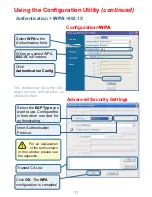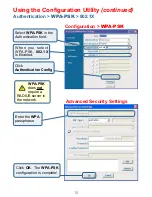
8
Standards-Based Technology
The DWL-AG660 Wireless Cardbus Adapter utilizes the
802.11a, 802.11b
and
802.11g
standard.
The IEEE
802.11g
standard is an extension of the
802.11b
standard. It increases
the data rate up to 54 Mbps within the 2.4GHz band (108Mbps* in Turbo mode.)
The
802.11a
standard also increases the data rate up to 54 Mbps, but within
the 5GHz band. Both 802.11a and 802.11g utilize
OFDM
technology.
This means that in most environments, within the specified range of this device,
you will be able to transfer large files quickly or even watch a movie in MPEG
format over your network without noticeable delays. This technology works by
transmitting high-speed digital data over a radio wave utilizing
OFDM
(
O
rthogonal
F
requency
D
ivision
M
ultiplexing) technology.
OFDM
works by splitting the radio
signal into multiple smaller sub-signals that are then transmitted simultaneously
at different frequencies to the receiver.
OFDM
reduces the amount of
crosstalk
(interference) in signal transmissions. The D-Link DWL-AG660 will automatically
sense the best possible connection speed to ensure the greatest speed and
range possible.
Wireless Basics
(continued)
802.11g offers the most advanced network security features available today,
including: WPA , 802.1x, TKIP, AES and Pre-Shared Key mode. These security
features are explained in more detail in the
Introduction
and the
Features
section
of this manual.
The DWL-AG660 is backwards compatible with 802.11b devices. This means
that if you have an existing 802.11b network, the devices in that network will
be compatible with 802.11g devices at speeds up to 11Mbps in the 2.4GHz
range.
*Maximum wireless signal rate derived from IEEE Standard 802.11a and 802.11g specifications. Actual
data throughput will vary. Network conditions and environmental factors, including volume of network traffic,
building materials and construction, and network overhead lower actual data throughput rate.























